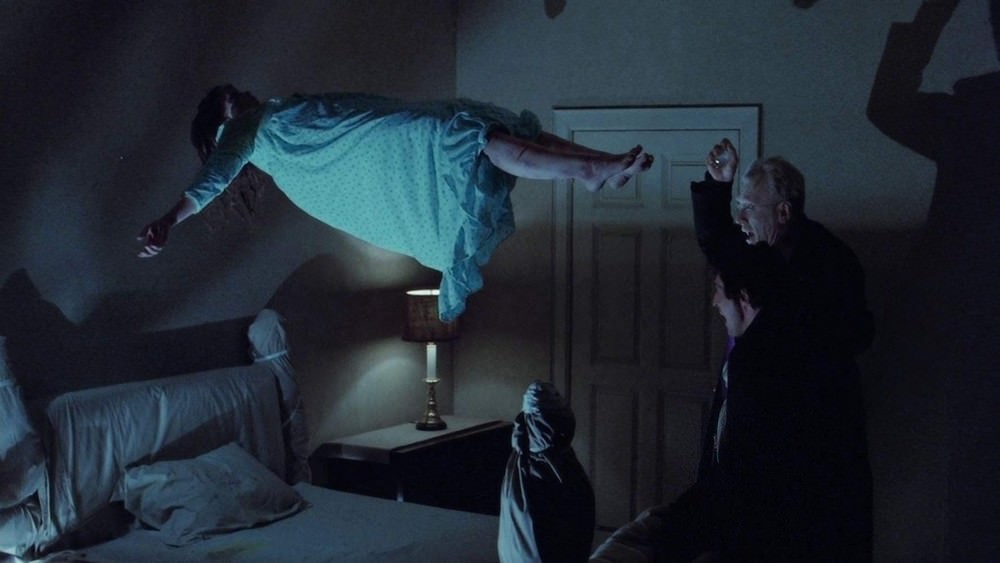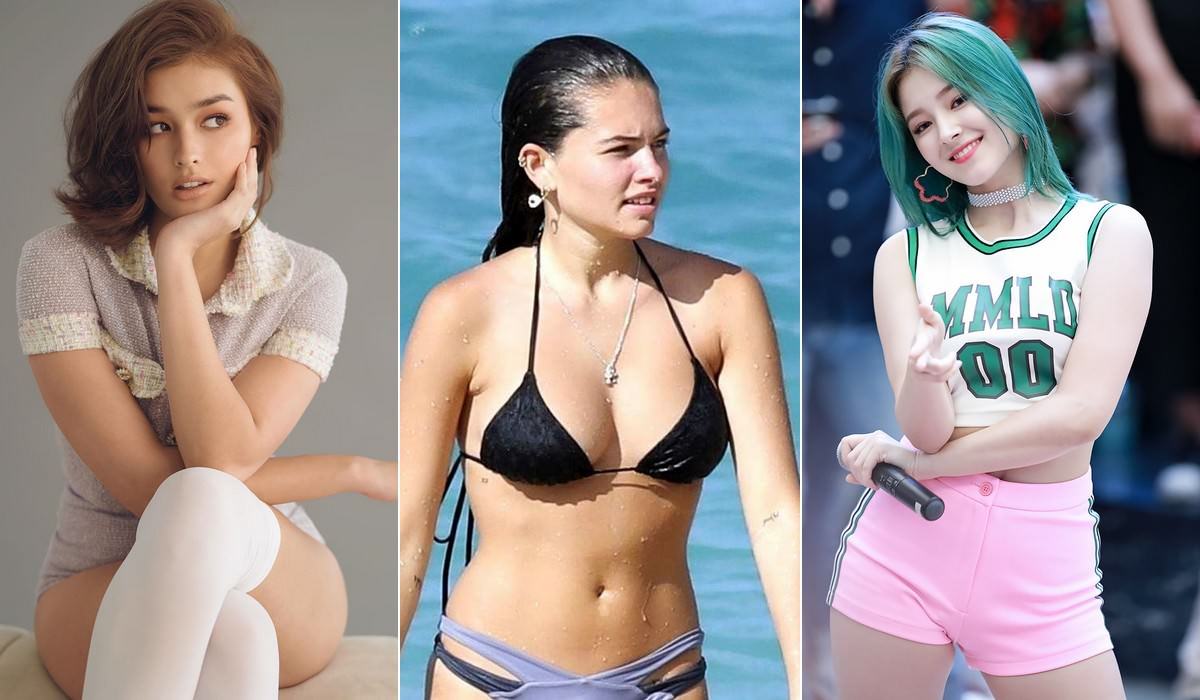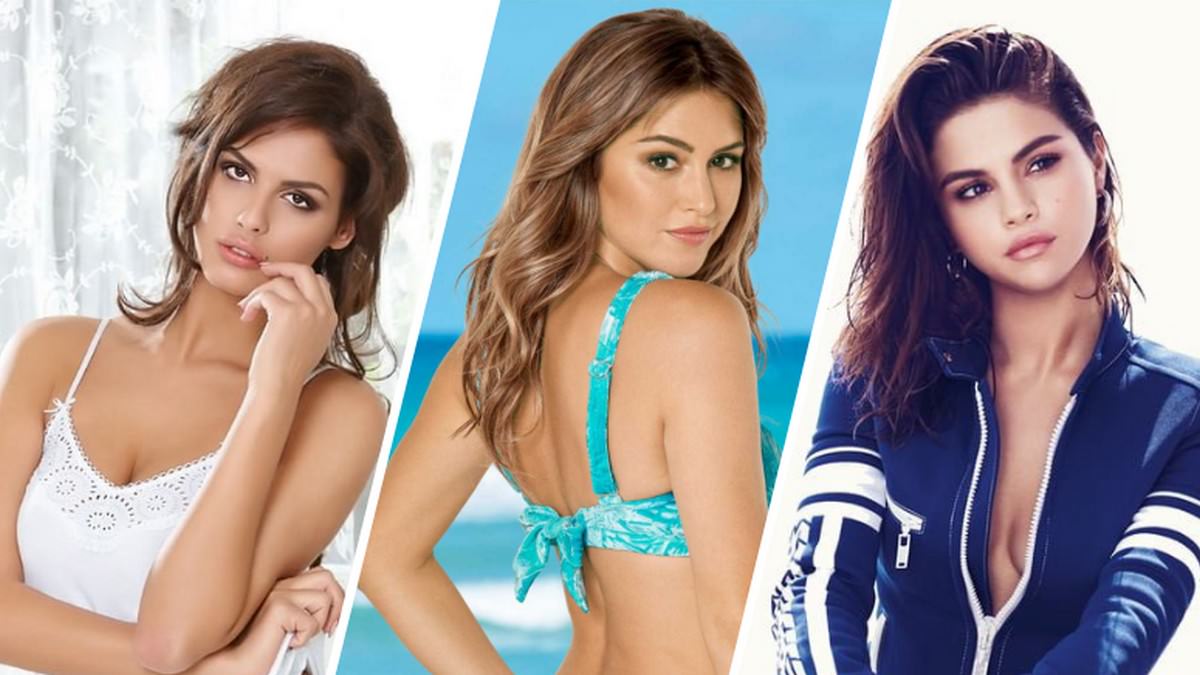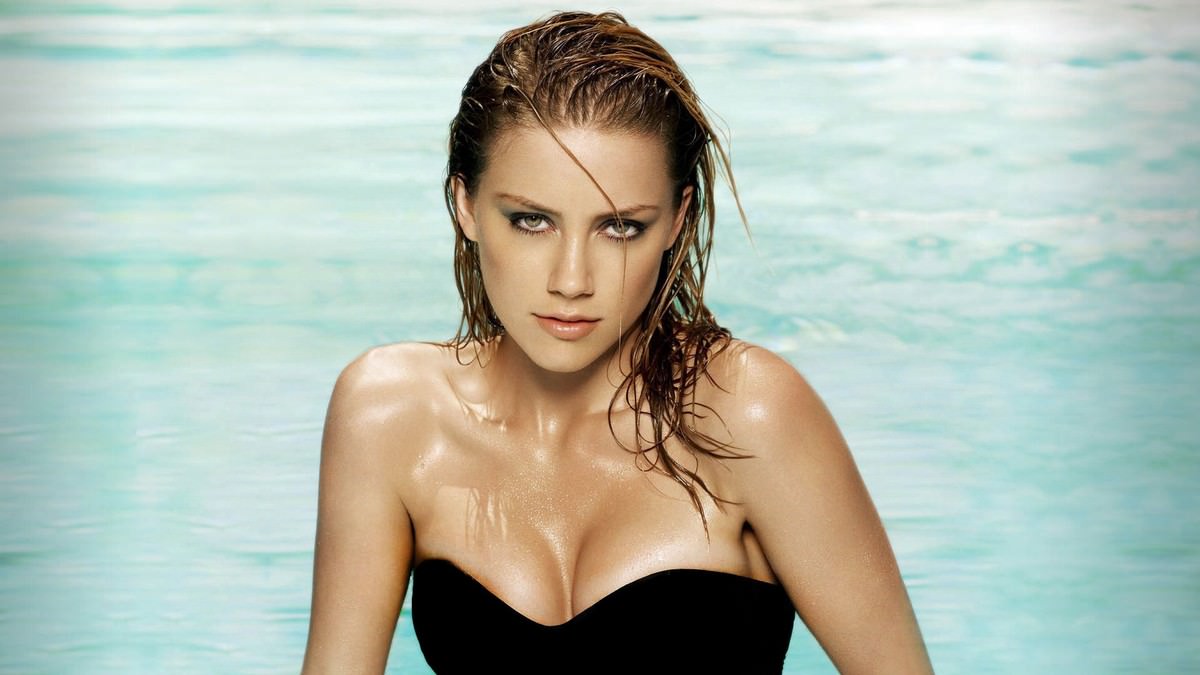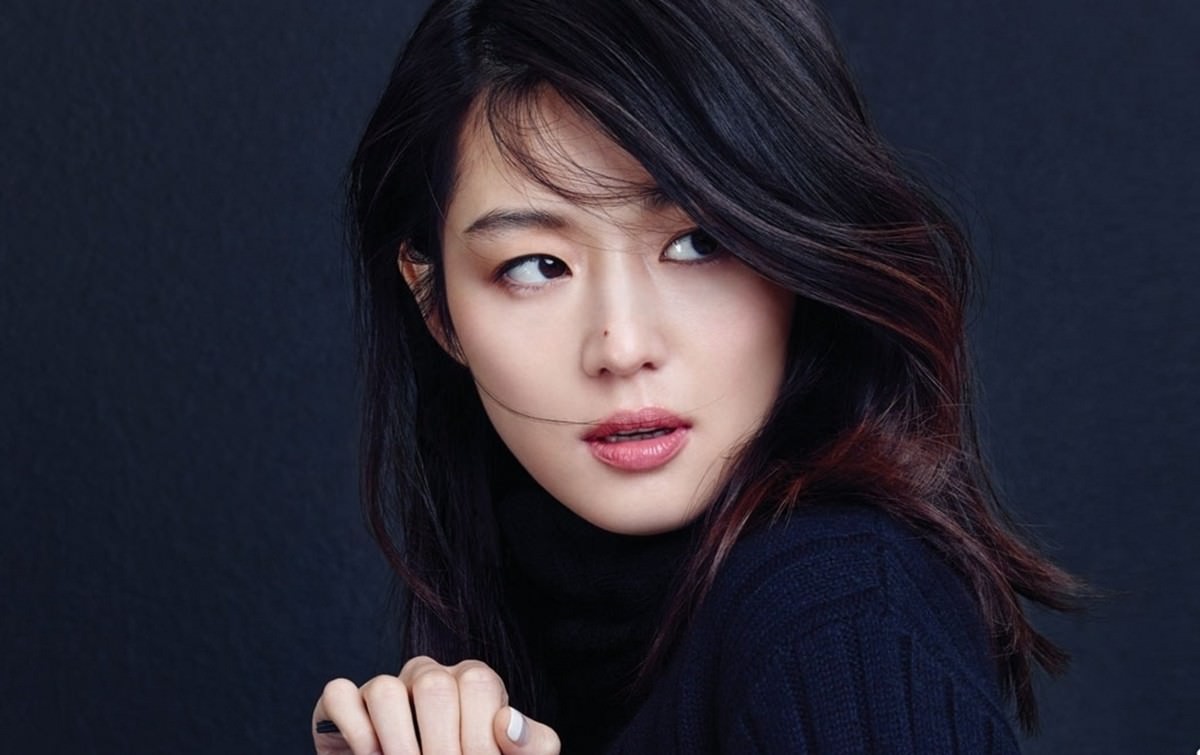Horror cinema has been the most popular method of nightmare creation for nearly a hundred years. We have discovered that the one thing people all over the world love, that’s entering a darkened room and having the worst imaginable creatures jump out to rattle their unconscious mind and wake up their primordial fears. Being scared can be a private thing, but there’s nothing better than sitting in a crowded theater with dozens of other people, as if waiting for a sermon, and being terrified together. Trends and monsters have evolved, but our desire to be horrified remains the same, and these films have endured and changed the conversations about fear and creatures of night. Take a look at the following 10 greatest horror movies of all time.
10. The Thing (1982)

John Carpenter turned the slasher film into a cottage industry with Halloween. But with ‘The Thing’, his remake of Howard Hawks and Christian Nyby’s ‘The Thing From Another World’, is a nasty little number. He put a dozen men, led by the always brilliant Kurt Russell, against a shape-shifting extra-terrestrial that’s woken up from its icy tomb after a thousand years.
It takes the form of these men one at a time, pitting them against each other before they can get around neutralizing the external threat. ‘The Thing’ remains a potent political film, as well as a model of genius practical effects by masters Stan Winston and Rob Bottin. They don’t make them like this anymore.
9. Near Dark (1987)

Sexy, dusty and bloody, Kathryn Bigelow’s ‘Near Dark’ is the bar that all new vampire movies have to clear. A dust devil of erotically charged spree killing, ‘Near Dark’ follows a pack of nomadic bloodsuckers burning across the American southwest in an RV, leaving nothing but corpses in their wake. That is, until the youngest vampire Mae brings home Caleb with a fresh bite-mark on his neck. He has to learn how to ride with them or they’ll leave him to fend for himself with his new dependency on human blood.
Counted among the greatest horror movies of all time, Bigelow’s vampire rampages across desolate country, finding joy and an undeniable allure in spending time with the most grisly murderers of the 80s. ‘Near Dark’ is as seductive as it is scary.
8. The Blair Witch Project (1999)

The world changed forever after ‘The Blair Witch Project’. The found footage sub-genre – now a thriving multi-million dollar addition to both mainstream and direct-to-video horror – would never have become a viable option for filmmakers without ‘The Blair Witch Project’ turning an immense profit on a relatively minuscule investment.
It also showed how much fear you could inspire just by promising that there was something in the woods waiting. It wrung every ounce of potential from its incredibly simple premise; Three filmmakers heading into the woods to shoot footage for a documentary on the legend of the Blair Witch. It proved that independent filmmakers with a little ingenuity could inspire box office figures to rival Hollywood juggernauts, and that people liked the idea of being scared as much as they liked vicariously experiencing romance or watching things blow up.
7. The Hills Have Eyes (1977)

Wes Craven may be remembered today as the guy who brought post-modernism and gallows humor to American horror, thanks to ‘Scream’ and ‘Nightmare on Elm Street’, but before all that he made movies that seemed genuinely dangerous and are often ranked among the greatest horror movies.
His 1977 film ‘The Hills Have Eyesis’ a great example, a mix of hillbilly black comedy and take-no-prisoners violence and degradation. The Carter Family vacation is interrupted by a clan of cannibals living in a radioactive desert. The suburbanites must learn to fight dirty if they want to survive one day being hunted by their cut-throat adversaries. Craven goes just as low, crafting a gritty, unforgiving look at the things we’ll do to survive and protect what’s ours.
6. Night of the Living Dead (1968)

In 1968 George Romero looked around at a world in turmoil (Vietnam, racial tension, high profile assassinations) and let the ugliness seep into his first film, ‘Night of the Living Dead’, a righteously angry, aggressive deconstruction of suburban passive aggression. Giving an ancient monster, the zombie, new life that has yet to drain from it, he found the creature that best reflected a nation in crisis.
Trauma survivor Barbara (Judith O’Dea) meets Ben (Duane Jones), a charismatic black man, in a remote farmhouse after they’re both attacked by zombies. They barricade themselves inside without realizing there’s a family already inside, led by hot-headed Harry (Karl Hardman). The issue of Ben’s race is never stated outright (Romero knew the images would speak for themselves) but Harry’s mistrust of the otherwise sturdy, handsome and tough man can’t be chalked up to much else. The spin-chilling reason this movie is often regarded among the greatest horror movies is that although the zombies never stop pounding on the doors and windows, the real monsters are already in the house.
5. The Texas Chainsaw Massacre (1974)

Tobe Hooper’s ‘The Texas Chain Saw Massacre’ is still undervalued as a work of precise craft and bountiful art. Everyone knows about the film and its reputation as one of the most unsettling experiences in all of film history, but how many people can pinpoint the incredible work it took to have audiences blindsided by the sweltering ghouls at the heart of the story.
Five kids make an unfortunate pit stop at an abandoned house while on a road trip. When they walk to the nearest house to ask for gas, they meet Leatherface (Gunnar Hansen), a hulking mass of muscle with the mind of child who doesn’t take kindly to strangers. ‘The Texas Chainsaw Massacre’ is a most disturbing film, but only because Hooper took such care in building a realistic world for his idealistic heroes to wander into. If we didn’t believe these kids still expected kindness from strangers, it wouldn’t hurt twice as bad when the illusion, along with their bones, is shattered in an instant.
4. Kuroneko (1968)

The legacy of Japanese horror is long, storied and filled with more uncanny images of ghostly apparitions and things twisted beyond recognition. Director Kaneto Shindô was not a horror director first and foremost, rather an incredibly patient purveyor of quiet communal studies – his interest lay in the way time passes, changing the fundamental nature of survival along the way.
‘Kuroneko’ finds a veteran (Kichiemon Nakamura) returning from war a hero, only to learn his wife and mother (Kei Satô and Nobuko Otowa) have been murdered by marauding deserters. Their ghosts now haunt the grove near his home. Shindô conducts the near silent grove and his bursts of otherworldly violence like an orchestra, in perfect command of the dynamics of his scare scenes and the longing and loss that drives the ghosts and their vanquisher.
3. The Exorcist (1973)

Very appropriately, ‘The Exorcist’ ranked third in our list of greatest horror movies. William Friedkin put to use his experience directing documentaries, crime dramas and experimental theatrical adaptations when adapting William Peter Blatty’s best-selling tale of a young woman possessed. Friedkin shreds his viewer’s nerves with one unexpected technique or image after another. His trick is making the real world treatment of an impossible disorder seem just as invasive and terrible as anything the devil could get up to.
Regan MacNeil (Linda Blair) has begun behaving in ways that perplex doctors, psychiatrists and hypnotherapists alike. She swears harms herself and has the strength of two men, and when she pressed claims to be the devil himself. Two priests (Jason Miller and Max Von Sydow) are brought into to try their luck when surgery and tests fail. Friedkin spares no torment to his characters or his audience in imagining the worst sort of horror.
2. The Shining (1980)

Stanley Kubrick’s productivity slowed to a crawl in the years following ‘The Shining’, and while in one sense it’s tragic we never got more films from him than we did. It would have been tough for him to do better than his ultimate psycho-sexual daydream ‘Eyes Wide Shut’ or ‘The Shining’. The one of the greatest horror movies ever crafted.
Jack Torrance (Jack Nicholson) is a writer looking for his inspiration and a little peace and quiet to do something with it. He takes a job as the caretaker of the creepy ‘Overlook Hotel’ and soon a creeping disquiet falls over him. Creativity leaves him, replaced by a violent insanity inherited by the hotel guests whose spirits linger in every corridor. ‘The Shining’ is a brilliant, bizarre immersion into an artist’s obsessions.
1. Psycho (1960)

No other movie can deserve the number one position among the greatest horror movies more than ‘Psycho’. Alfred Hitchcock was a scientist, a man who experimented with the emotions and reactions of his audience, and images were the medium under his microscope. ‘Psycho’ was his experiment in making a film with the budget of a TV production and in breaking expectations.
Marion Crane (Janet Leigh) steals a briefcase full of money and stays the night at the homey looking Bates Motel, run by nervous, awkward Norman (Anthony Perkins). After a strange dinner, Marion takes a shower, then meets Norman’s mother, Mrs. Bates. ‘Psycho’ changed the way people approached horror films – suddenly no one was safe, no space, no character, or our traditional concept of good and evil. Anything was fair game, thanks to the way Hitchcock penetrated even the safe confines of a horror movie.
